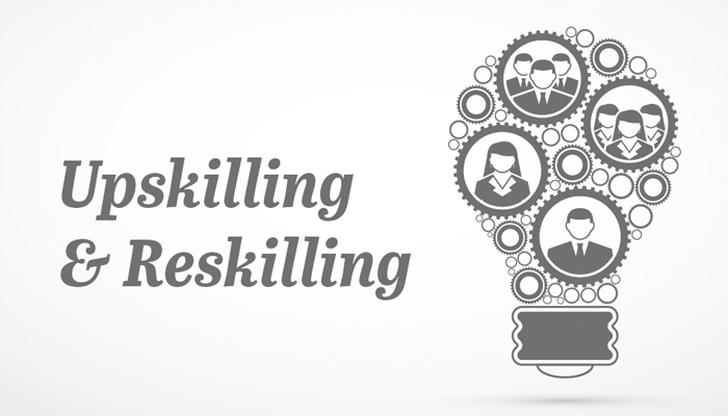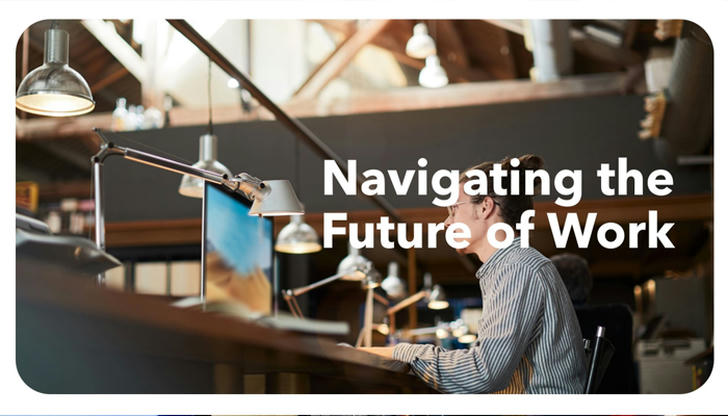Upskilling vs. Reskilling: Navigating the Future of Work
The world of work is evolving faster than ever. Automation, artificial intelligence, and shifting economic demands are transforming how companies operate—and what skills they need. In this rapidly changing landscape, two concepts have emerged as critical for workforce sustainability: upskilling and reskilling.
But what exactly do these terms mean, and how can you use them to future-proof your career?
This article will explore the differences between upskilling and reskilling, why they matter, and how individuals and organizations can navigate the changing job market through lifelong learning.

What Is Upskilling?
Upskilling refers to enhancing your existing skills or gaining additional competencies to advance in your current role or industry. It focuses on staying relevant and competitive in a job you already know or are familiar with.
Examples of Upskilling:
- A marketer learning advanced data analytics to improve campaign performance.
- A teacher learning how to use new education technologies or AI-driven tools.
- A manager taking a leadership course to better support their team.
What Is Reskilling?
Reskilling means learning entirely new skills to switch to a different role or career path. This usually happens when a job is becoming obsolete, or when someone wants to move into a new field entirely.
Examples of Reskilling:
- A factory worker learning IT support or cybersecurity after automation.
- A journalist transitioning into content marketing or UX writing.
- A hospitality worker shifting to a healthcare or logistics career during economic shifts.

Why Upskilling and Reskilling Matter
1. Technology Disruption
- New technologies are changing how work gets done. Jobs that didn’t exist 10 years ago—like cloud architects or AI trainers—are now in high demand.
- McKinsey predicts that by 2030, up to 375 million workers worldwide may need to change jobs.
2. Lifelong Career Shifts
- The traditional “one job for life” model is fading. Most people today will switch careers multiple times.
- Reskilling allows workers to adapt and reinvent themselves.
3. Talent Shortages
- Employers often struggle to find people with the right skills. Upskilling helps bridge this gap.
- Organizations that invest in internal learning reduce turnover and boost employee loyalty.
Key Differences Between Upskilling and Reskilling
| Feature | Upskilling | Reskilling |
|---|---|---|
| Goal | Improve in current role | Transition to a new role |
| Learning Scope | Build on existing knowledge | Learn from scratch |
| Time Investment | Typically shorter | May take longer |
| Career Impact | Promotion, raise, better output | New job or career change |
| Examples | New software tools, certifications | Coding bootcamp, new degree |

When Should You Upskill?
- Your industry is changing, but your job still exists.
- You want to stay competitive or aim for a promotion.
- You feel your current skills are becoming outdated.
- Your employer is offering learning and development support.
Common Upskilling Areas:
- Data literacy
- Project management
- Artificial intelligence
- Digital marketing
- Soft skills (communication, adaptability, leadership)
When Should You Reskill?
- Your job is at risk due to automation or downsizing.
- You feel burned out or unfulfilled in your current career.
- You want to explore a completely new interest or industry.
- Emerging fields are offering better job prospects.
Popular Reskilling Pathways:
- Healthcare and elder care
- Information technology and cybersecurity
- Green energy and sustainability
- Logistics and supply chain
- Creative digital fields (UX, design, content)
How to Start Upskilling or Reskilling
1. Assess Your Goals
- Are you looking to advance in your current field or change careers completely?
- Identify your strengths and transferable skills.
2. Choose the Right Learning Method
- Online courses: Coursera, edX, LinkedIn Learning
- Certifications: Google, AWS, CompTIA, PMP
- Bootcamps: Coding, data science, design, etc.
- Workshops/Seminars: Local training events or company-led programs
- Mentorship and Peer Learning: Learn from those already in your desired role
3. Use Career Resources
- Government programs for displaced workers or unemployed adults
- Employer-sponsored training
- Nonprofits and community colleges offering adult education

The Role of Employers and Governments
Companies and institutions play a critical role in enabling upskilling and reskilling.
What Employers Can Do:
- Invest in internal training platforms and learning tools
- Partner with online education providers
- Create a culture of continuous learning
- Provide clear career pathways for advancement or transition
What Governments Can Do:
- Offer reskilling subsidies and grants
- Support technical and vocational education
- Facilitate public-private training partnerships
- Provide data and forecasts on future job trends
Overcoming Barriers to Lifelong Learning
Time Constraints
- Use microlearning (short lessons), podcasts, or mobile apps
- Block out regular “learning time” each week
Financial Limitations
- Look for free or low-cost platforms like Khan Academy or Coursera
- Use employer tuition reimbursement or government grants
Fear of Starting Over
- Begin with small courses to build confidence
- Talk to others who’ve made successful transitions
Real-World Examples
- Linda, a retail manager, upskilled in e-commerce and now runs her store’s online operations.
- Carlos, a former taxi driver, reskilled as a delivery route planner using digital tools.
- Mei, an HR coordinator, earned a certification in diversity and inclusion to expand her career impact.
The Future Is Flexible
Whether you're aiming to climb the ladder in your current field or start fresh in a new one, both upskilling and reskilling are essential tools for staying adaptable. The jobs of the future will require agility, curiosity, and a growth mindset.
Final Thought:
“The best investment you can make is in yourself.” — Warren Buffett
So whether you're sharpening your skills or changing directions entirely, keep learning. The future of work isn't waiting—it’s already here.
